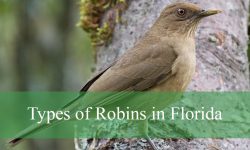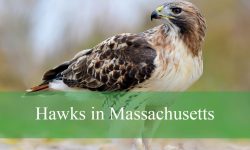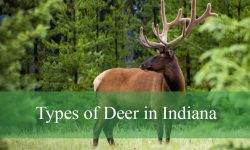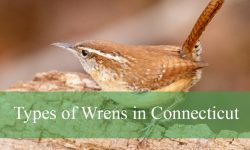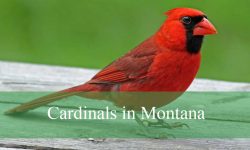Idaho’s diverse landscape, with its rugged mountains, vast plains, and winding river valleys, provides the perfect environment for many birds of prey, especially falcons. These remarkable raptors are admired for their speed, agility, and sharp vision, which allow them to dominate the skies with precision and grace.
From the tiny American Kestrel often seen hovering over open fields to the mighty Gyrfalcon that visits during the colder months, falcons can be found throughout Idaho in every season. Each species has adapted beautifully to the state’s varied habitats, ranging from high cliffs to wide, open grasslands.
This guide introduces seven fascinating falcon species that live or visit Idaho. Each one has its own unique traits, hunting style, and natural beauty, making Idaho an exceptional place for anyone interested in observing these incredible birds.
Different Types of Falcons Found in Idaho
American Kestrel (Falco sparverius)
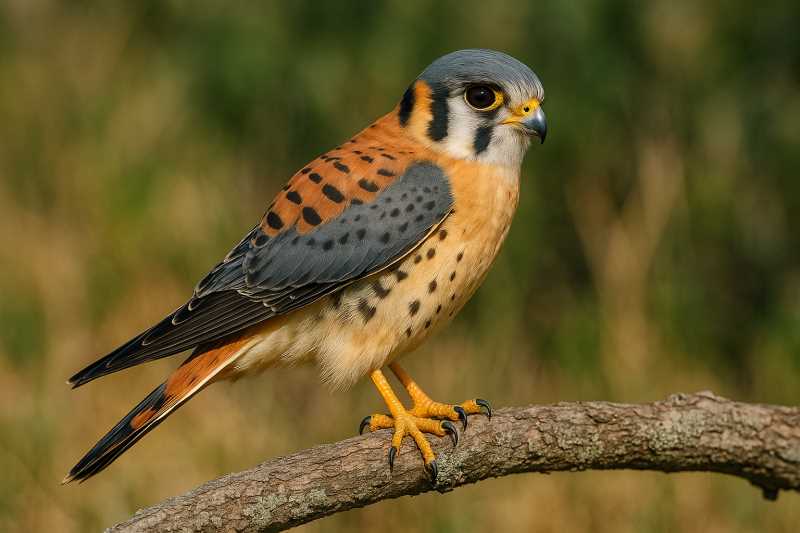
The American Kestrel is the smallest and most abundant falcon species in Idaho. It is a striking bird often seen perched on fence posts or hovering gracefully above open fields as it searches for prey. Males are particularly eye-catching with their blue-gray wings and rusty-red backs, while females are larger and more uniformly brown, offering excellent camouflage. Both sexes share a pair of distinct black facial stripes that give them a sharp, masked appearance.
This tiny falcon is known for its incredible agility and ability to hover in midair against the wind, a behavior known as “kiting.” American Kestrels rely on their keen eyesight to detect movement on the ground from impressive distances. They use short, rapid dives to capture their prey, often returning to a perch to consume it. Despite their small size, they are confident hunters with bold personalities, frequently chasing away larger birds that enter their territory.
American Kestrels thrive in a variety of open habitats across Idaho, including grasslands, pastures, meadows, and agricultural areas. They are also comfortable living near towns and rural communities, where power lines and utility poles offer convenient hunting perches. Their adaptability has allowed them to remain widespread even in regions affected by human development.
Their diet mainly consists of large insects such as grasshoppers and beetles, along with small mammals, lizards, and occasionally small birds. During the warmer months, insects make up most of their food, while in winter, kestrels rely more heavily on rodents. This varied diet allows them to survive in both rural farmlands and semi-urban settings.
In Idaho, the American Kestrel is a year-round resident, nesting in tree cavities, old woodpecker holes, and nest boxes placed by humans. They typically raise four to five chicks each breeding season, with both parents taking part in feeding the young. Their adaptability, vibrant plumage, and lively behavior make them one of Idaho’s most easily recognized and well-loved raptors.
Peregrine Falcon (Falco peregrinus)
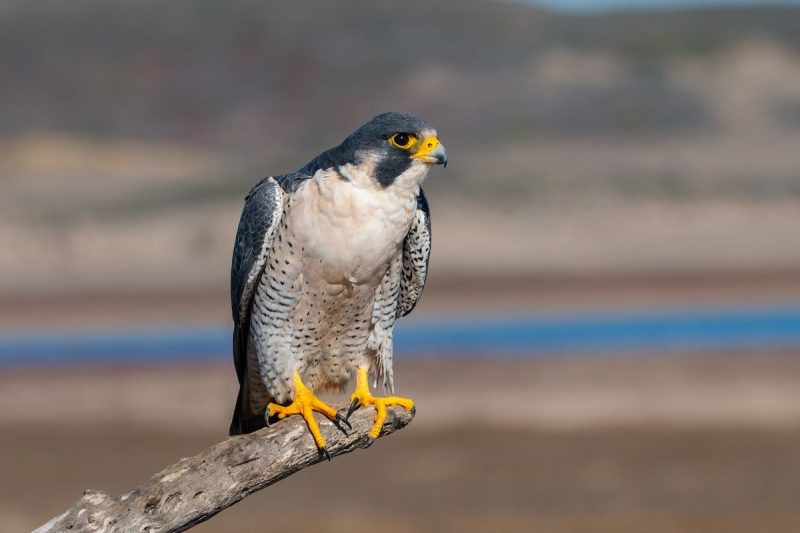
The Peregrine Falcon is one of Idaho’s most remarkable raptors, celebrated for both its beauty and unmatched speed. Known as the fastest bird on Earth, it can reach diving speeds of over 200 miles per hour during a hunting stoop. Adults have a sleek, slate-gray back, a white throat, and a bold black “helmet” pattern around the head that gives them an intense, focused appearance. Their long, pointed wings and muscular build allow them to maneuver swiftly through the air with incredible precision.
In Idaho, Peregrine Falcons are commonly found in regions with steep cliffs, rocky canyons, and wide river valleys that provide ideal nesting and hunting grounds. Some have also adapted to life in urban areas, nesting on tall buildings, bridges, and other man-made structures that mimic their natural cliffside habitats. These adaptable raptors are often spotted near the Snake River Canyon and other rugged areas where prey is abundant.
Their diet consists mainly of other birds, including pigeons, ducks, and songbirds, which they capture in midair during astonishing aerial chases. Peregrines are masters of speed and timing, folding their wings tightly and diving from great heights to strike their prey with immense force. Once caught, the falcon carries its meal to a perch where it plucks the feathers before eating. Their hunting skill and precision make them one of the most efficient predators in the avian world.
Peregrine Falcons form strong pair bonds and often return to the same nesting site each year. Their nests, called scrapes, are simple depressions on cliff ledges or high structures where females lay two to four eggs. Both parents share the duties of incubation and feeding the chicks, which fledge about six weeks after hatching.
After nearly disappearing from North America in the mid-1900s due to pesticide use, especially DDT, Peregrine Falcons have made an inspiring recovery through conservation programs and reintroduction efforts. Today, they breed successfully across much of Idaho, symbolizing the power of wildlife protection and the resilience of nature.
Prairie Falcon (Falco mexicanus)
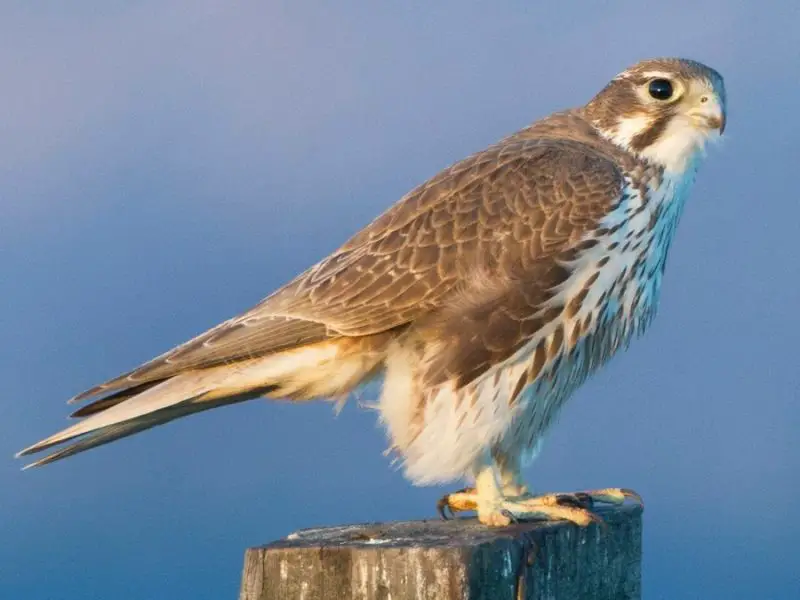
The Prairie Falcon is a powerful and broad-winged raptor that thrives in Idaho’s open country. It is easily recognized by its light brown upperparts, pale underbelly, and distinctive dark patches under the wings, often referred to as “armpit” markings, which are especially visible in flight. Although it resembles the Peregrine Falcon in shape and behavior, the Prairie Falcon is lighter in color and more commonly found in dry, open habitats rather than near water or cliffs. Its fierce expression and confident flight make it one of the most impressive falcons to watch in the wild.
In Idaho, Prairie Falcons are most abundant in the southern regions, where vast expanses of sagebrush desert, rocky plateaus, and canyons create ideal hunting grounds. They are highly territorial birds that use the state’s natural rock formations and cliffs as nesting sites. These falcons prefer solitude and are often seen gliding over open plains in search of prey or perched high on rocky ledges scanning the landscape.
Unlike the Peregrine Falcon, which relies on speed and vertical dives to capture its prey, the Prairie Falcon depends on surprise and quick bursts of power. It often flies low over the ground before suddenly striking unsuspecting ground squirrels, small birds, or reptiles. During spring and summer, these falcons are known to feed heavily on Richardson’s ground squirrels, which are abundant in Idaho’s open areas.
Prairie Falcons breed in early spring, using cliff ledges or small crevices as nesting sites, where females lay about three to five eggs. Both parents are active during the breeding season, with the male responsible for hunting while the female guards the nest. The chicks grow quickly, becoming strong fliers within a few weeks of hatching. Their natural resilience and strong hunting instincts have allowed the species to thrive across the state.
In Idaho, the Prairie Falcon is a year-round resident, a symbol of the rugged and untamed western landscape. Its ability to adapt to harsh, dry environments and its fierce independence embody the wild spirit of Idaho’s open spaces. Birdwatchers can often spot this falcon soaring gracefully over desert cliffs or perched on high ridges surveying its domain.
Merlin (Falco columbarius)
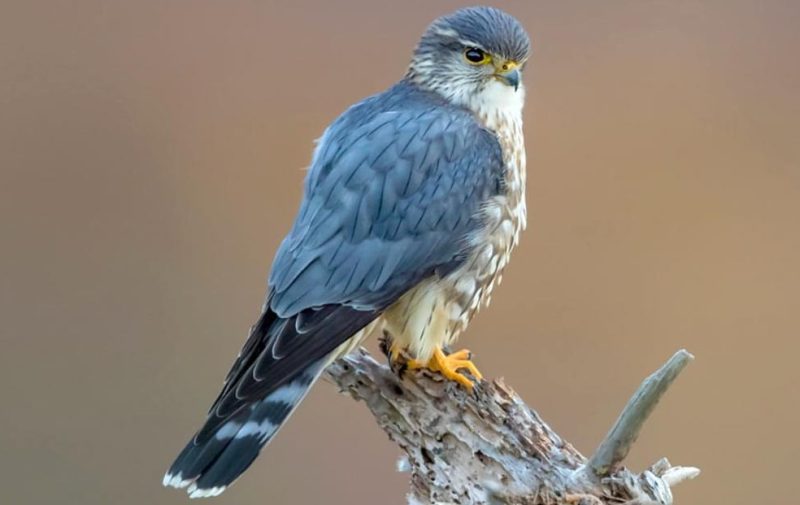
The Merlin is a small, compact, and fierce falcon that visits Idaho mainly during migration and winter months. Despite its modest size, this bird is known for its power and fearlessness. Males are striking with bluish-gray upperparts and a pale, lightly streaked underside, while females and juveniles display a more brownish plumage with heavy streaking. The Merlin’s short tail and sharply pointed wings make it easy to recognize when seen darting swiftly through the sky.
Unlike the more dramatic Peregrine Falcon, which relies on high-altitude dives, the Merlin is a master of direct pursuit and surprise attacks. It uses short bursts of incredible speed to chase down small birds in midair, relying on agility and endurance rather than vertical drops. Merlins often hunt in open country, coastal areas, and forest edges, where songbirds and small shorebirds provide plentiful prey. They may also take small mammals and insects when birds are scarce.
Merlins are often solitary and less territorial than other falcons. They prefer to hunt low to the ground, weaving skillfully through trees and shrubs before striking. During migration seasons, they can be seen following flocks of migrating birds, using the abundance of prey to refuel for their long journeys. Their fast, low flights make them one of the most thrilling raptors to observe in action.
In Idaho, Merlins are most commonly spotted during spring and fall migration, though some individuals remain in the southern part of the state throughout winter. They are particularly visible around open grasslands, forest edges, and urban parks where small bird populations are dense. Their adaptable nature allows them to survive in a wide range of conditions, from the Snake River Plain to northern forests.
Although Merlins do not typically breed in Idaho, they often reuse old crow or magpie nests when nesting farther north. Their breeding season begins in late spring, and both parents share in feeding the chicks. Each autumn, many of these small but spirited falcons return to Idaho as part of their migratory path, adding excitement to the state’s seasonal birdlife.
Gyrfalcon (Falco rusticolus)
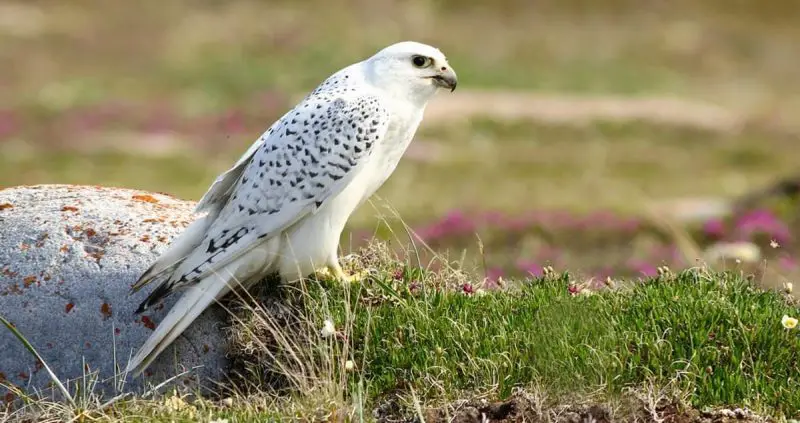
The Gyrfalcon is the largest and most formidable falcon in the world, a truly awe-inspiring bird that occasionally graces northern Idaho during the winter months. Native to the Arctic tundra, this powerful predator ventures southward when food becomes scarce in its northern range. In Idaho, it is most often seen in open farmlands, along frozen rivers, or near large lakes where flocks of waterfowl gather. Its presence is rare, but every sighting of this majestic raptor leaves a lasting impression on birdwatchers.
Gyrfalcons occur in a variety of color morphs, ranging from pure white to dark slate-gray and intermediate shades of silver. White morphs are particularly striking, with clean, pale plumage and speckled markings that blend beautifully with snowy landscapes. The bird’s large size, broad wings, and steady, powerful flight set it apart from other falcons. Its chest and wings are more robust, giving it the strength to hunt large prey in harsh, cold environments.
This falcon’s diet primarily includes waterfowl, ptarmigans, pigeons, and other birds that inhabit open, windswept regions. It relies on a combination of stealth and strength, often surprising prey with a low, fast approach before striking with immense power. Unlike the Peregrine Falcon, which dives from great heights, the Gyrfalcon uses horizontal chases and ambush tactics to overpower its quarry. Its endurance and determination make it a formidable hunter in the frozen wilderness.
Although not a year-round resident, the Gyrfalcon’s winter appearances in Idaho draw considerable attention from raptor enthusiasts and ornithologists alike. Birders often spot them in the state’s northern farmlands or along the Snake and Clearwater Rivers, where they pursue ducks and other waterfowl. Their ability to survive and hunt in subzero conditions showcases the resilience and adaptability of this Arctic species.
In the broader natural world, the Gyrfalcon symbolizes strength, endurance, and independence. Its rare visits to Idaho remind observers of the state’s deep connection to northern ecosystems and the wild beauty of nature that transcends borders. Seeing one of these magnificent birds in flight is a highlight for any birder, offering a glimpse into the untamed spirit of the far north.
Aplomado Falcon (Falco femoralis)
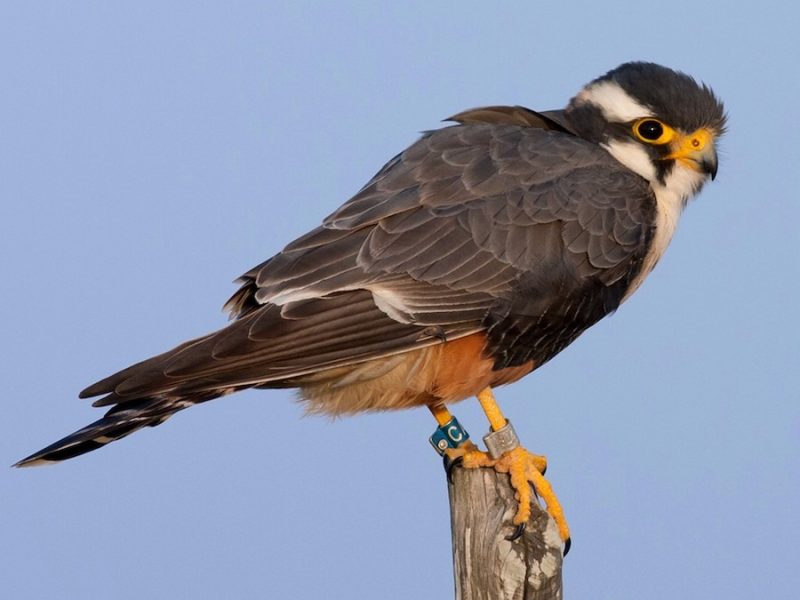
The Aplomado Falcon is one of the rarest and most striking raptors ever to appear in Idaho. Known for its elegant, slender build and long tail, this falcon stands out for its vivid coloration and graceful flight. Adults display blue-gray upperparts, white underparts, and a bold black belly band that gives them a sharp, banded appearance. They also feature distinct black facial markings contrasting beautifully against their pale face, giving them a masked look that is both fierce and refined.
Native primarily to the grasslands and savannas of Central and South America, the Aplomado Falcon thrives in open habitats where it can use its agility to hunt small birds and large insects. Its long, narrow wings and elongated tail make it exceptionally maneuverable, capable of quick turns and bursts of speed while chasing prey through low vegetation. These traits allow it to hunt efficiently in open terrain, often catching prey mid-flight with astonishing precision.
While common in parts of Mexico and Central America, the Aplomado Falcon is an extremely rare visitor to the southwestern United States and even more so in Idaho. Sightings in the state typically occur during rare migratory events or range expansions, possibly involving displaced individuals traveling northward. When one is spotted, it is considered a remarkable and memorable event among local birdwatchers.
In areas where they are resident, Aplomado Falcons often hunt cooperatively in pairs, using teamwork to flush prey from cover. They are known for their active hunting style and frequent hovering, which makes them appear similar to kestrels from a distance. Their nests are usually built in trees or on cliff ledges, sometimes reusing old hawk or crow nests.
Though Idaho lies far outside their normal range, occasional reports remind bird enthusiasts of how dynamic bird migration patterns can be. Catching sight of an Aplomado Falcon in Idaho is a rare privilege, offering a glimpse of a species that combines beauty, speed, and grace in a way few other raptors can match.
Eurasian Hobby (Falco subbuteo)
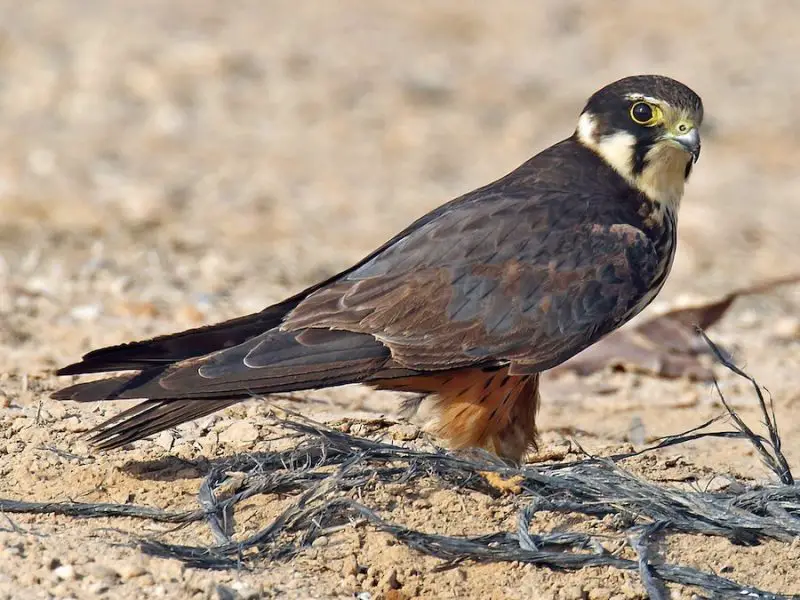
The Eurasian Hobby is an exceptionally rare and accidental visitor to North America, with only a few recorded sightings in the western United States, including Idaho. This sleek, medium-sized falcon is elegant in flight, with a slender body, long pointed wings, and a graceful, darting style that makes it one of the most agile fliers among falcons. Adults display slate-gray upperparts, a pale throat, and a warm orange-buff vent, while the dark mustache stripe on the face gives them a sharp and confident look.
Native to Europe, Asia, and parts of Africa, the Eurasian Hobby typically inhabits open woodlands, river valleys, and farmlands where flying insects and small birds are abundant. Its long, narrow wings and lightweight frame make it a highly efficient aerial hunter, capable of capturing dragonflies, bats, and swifts in midair. The Hobby’s hunting technique is breathtaking to witness — it combines speed, agility, and precision, darting effortlessly through the air with remarkable control.
Although it closely resembles a smaller version of the Peregrine Falcon, the Eurasian Hobby is more slender and lighter in build, with quicker wingbeats and a more buoyant flight. It is primarily a migratory species, traveling thousands of miles between breeding and wintering grounds. When it does appear in Idaho, it is most likely the result of migratory drift or disorientation, as the species occasionally overshoots its normal route during long-distance flights.
In its native range, the Eurasian Hobby is admired for its skill in catching fast-moving prey on the wing. It is often active during twilight hours when insects and bats are plentiful. The species typically nests in old crow nests located high in trees and raises two to four chicks each season. Both parents share the responsibility of feeding the young, teaching them to hunt through persistent aerial play.
For birders in Idaho, seeing a Eurasian Hobby is an extraordinary and once-in-a-lifetime experience. Its rarity, coupled with its elegant form and lightning-fast flight, makes it one of the most exciting and sought-after falcons ever recorded in the state. Each sighting reminds observers of the unpredictability of bird migration and the vast connections that link ecosystems across continents.
Best Time and Places to See Falcons in Idaho
Spring and summer are the best times to spot falcons in Idaho, particularly in open habitats, canyons, and cliffside areas. The Snake River Canyon, Owyhee region, and Boise Foothills are prime locations for observing Prairie Falcons and Peregrines.
During winter, look for Gyrfalcons and Merlins in the state’s northern plains and along frozen lakes and rivers, where waterfowl are abundant. American Kestrels remain visible year-round across urban and rural landscapes.
FAQs About Falcons in Idaho
1. What is the most common falcon in Idaho?
The American Kestrel is the most common and widespread falcon species in Idaho, seen throughout the year in both rural and suburban areas.
2. Are Peregrine Falcons found in Idaho year-round?
Yes. Peregrines are resident breeders in several parts of Idaho, especially near cliffs and river valleys, though some migrate south in winter.
3. Where can I see Gyrfalcons in Idaho?
Gyrfalcons occasionally appear in northern Idaho during the winter months, especially near open fields and large water bodies where they can hunt waterfowl.
4. Do falcons migrate through Idaho?
Yes. Several species, including Merlins and Peregrines, migrate through Idaho during spring and fall, following major river valleys and mountain corridors.
5. What is the rarest falcon in Idaho?
The Eurasian Hobby and Aplomado Falcon are the rarest falcon species ever recorded in Idaho, seen only on very rare occasions.
Conclusion
Falcons are among Idaho’s most captivating birds, representing both speed and power. Whether watching a Prairie Falcon soar over the desert cliffs or spotting a Peregrine Falcon hunting near the Snake River, each encounter offers a glimpse into nature’s perfection. Idaho’s diverse terrain supports a wide range of falcon species, making it a remarkable state for raptor enthusiasts year-round.

